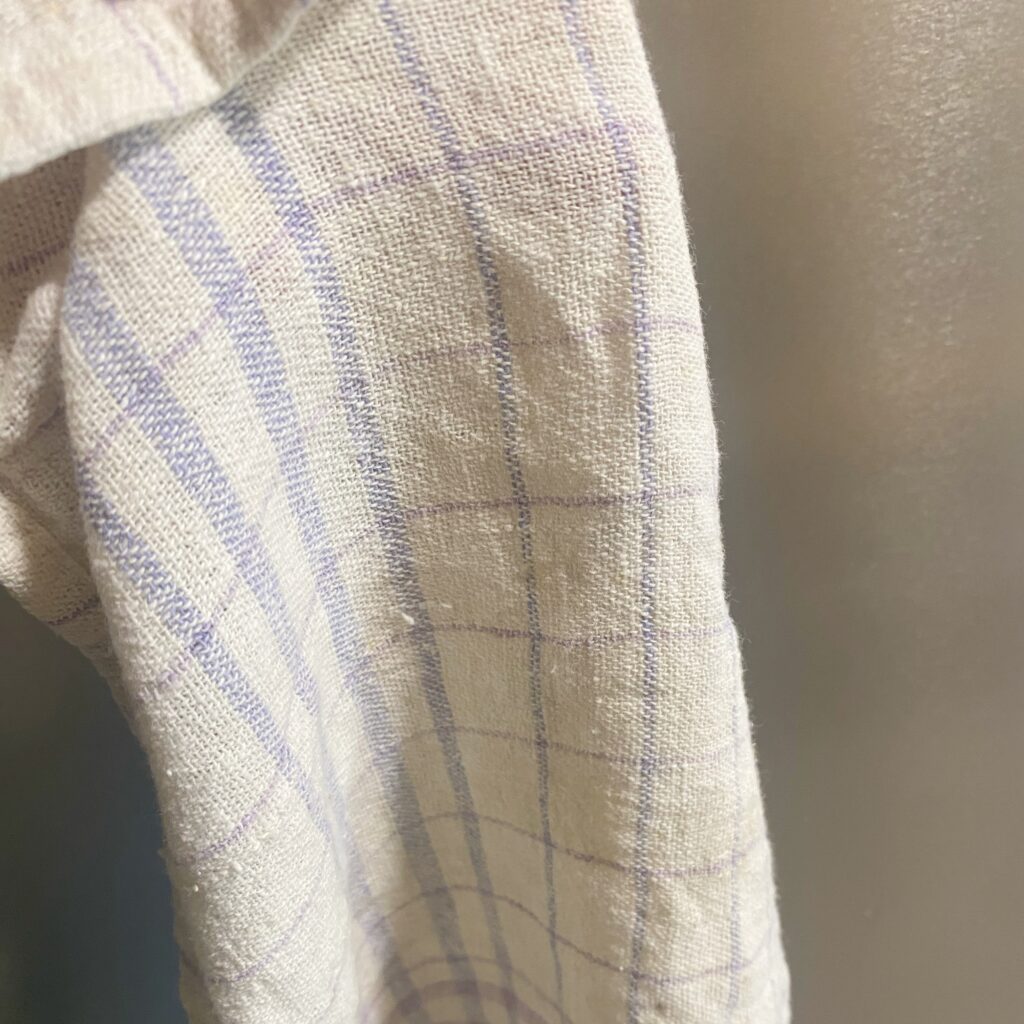Homemade Vegan Cream Cheese
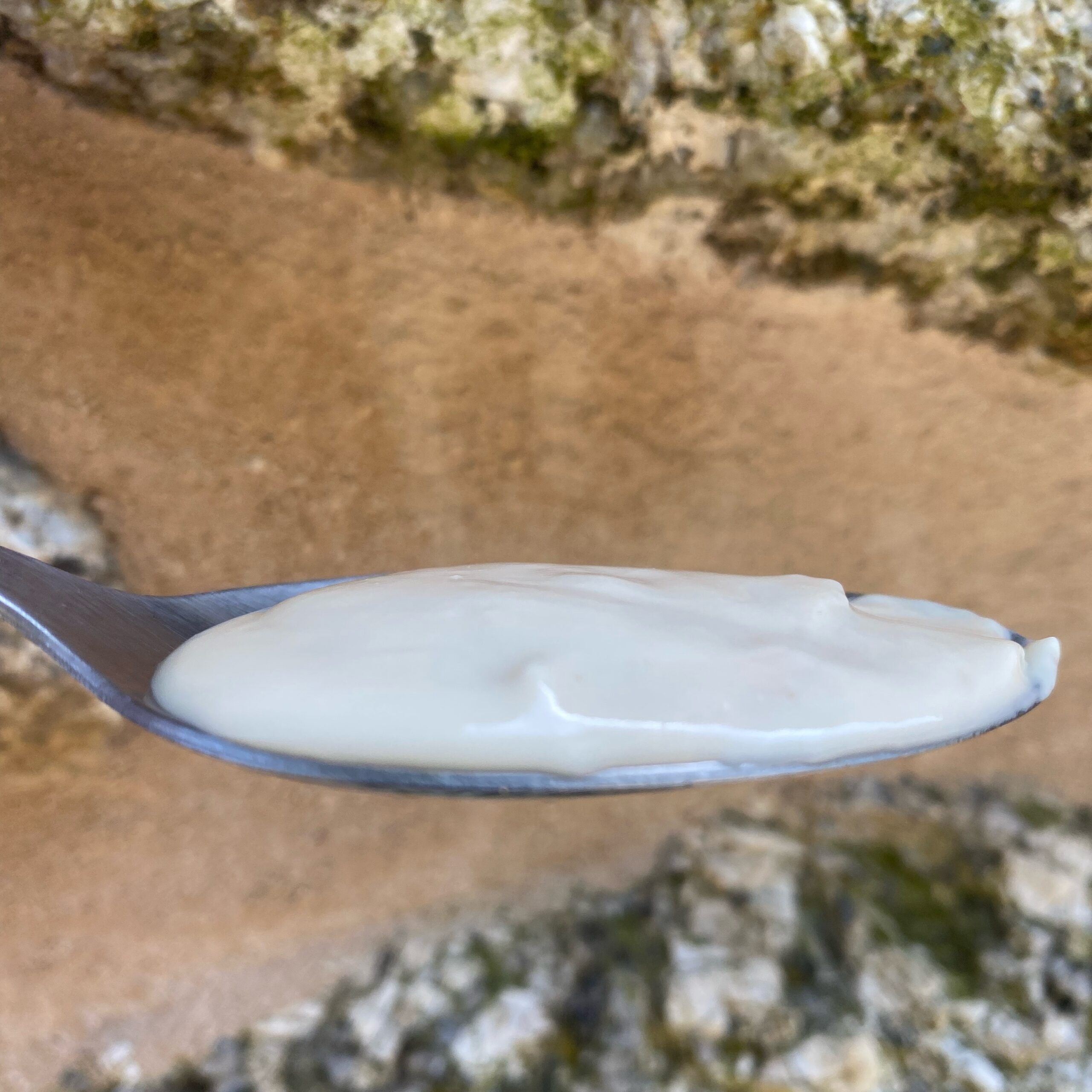
I have been experimenting over the last weeks to get a very nice homemade vegan cream cheese. I’ve always loved to use cream cheese for cooking, so when I went totally plant-based this was on the top of my list of efforts to find replacements. Store-bought products could never really satisfy me. They are often very expensive and/or made with too many additives. Therefore I have been navigating through a lot of different blogs and doing some research on how to make cream cheese in general (from cows or goats milk) and plant-based cream cheese in particular. This blog post is a try to bring together all this knowledge, personal experiences from the past and tipps and tricks from people that I know or met along my path added.
Let’s first explain the process of cheese making, seen from a chemical and physical point of view.
What happens when we add acidity to warm milk?
Milk contains proteins. Primarily casein and whey proteins. This occurs also to plant milk. So when we heat up milk, the proteins denature, which means they unfold from their natural structures. Now when we add any kind of acid (such as lemon juice or vinegar), it has an effect on the pH of the milk. Acidity lowers the pH. Now what happens is, that adding acid to the milk makes the casein proteins, which are normally dispersed in milk, destabilize, as the pH approaches the so called “isoelectric point of casein” ( which lies somewhere around pH 4.6).
Now as the pH goes down and the casein proteins denature, the proteins start to form clumbs. So they start to stick together in a way, leaving the liquid part, the so called whey, seperate. And these clumbs we want! They are what we then make the cheese out of. The whey is often used to make whey drinks or to feed animals.
Coagulation “Helpers”
Lots of producers help the process of coagulation using substances that enhance the coagulation process to make the clumbs more solid. Such coagulation enhancing substances can be derived from plants, labors or animals. They are commonly known under the name
- “rennets“, divided into “vegetable rennet”, (enzymes found in Fig, Thistle, Nettle, Butterwort, Knapweed, Mallow, Teasel, Yarrow), “microbial rennet” (fungi or bacteria that have been genetically modified to produce chymosin) and “animal rennet”, derived from the lining of the fourth stomach of a calf (unfortunately still commonly used because “traditional”). These acids are mostly used to make ripened cheeses.
- “starter bacteria“, or Lactic Acid Bacteria, which are bacteria that ferment lactose (milk sugar) into lactic acid, lowering the pH of the milk. This acidification helps in coagulation and develops the flavor and texture of the cheese. Common starter cultures include species of Lactococcus, Lactobacillus, and Streptococcus. These acids are commonly used to make yogurt or kefir.
- “acid coagulants“, which are basically acidity containing common ingredients in cooking like vinegar, lemon juice, or citric acid. This method is often used in making fresh cheeses like ricotta and paneer.
How to make homemade vegan cream cheese?
For a fine vegan cream cheese, we only use the last method, the one with the acid coagulants. Which basically is plant milk heated up to almost boiling temperature and coagulated by adding a few spoonfuls of vinegar or lemon juice. Et voilà, the proteins nicely part from the whey. I always like this moment. It means I am really making cheese myself! Last step: Pour it in a cheese cloth and let the whey drop off.
Additionally, you can blend the cheese to optain a more fine texture like a nice creamy mascarpone-like cheese.
Ingredients:
- 1 liter (4 cups) of plant milk (soy milk or almond milk work best)
- 2-3 tablespoons of white vinegar or lemon juice
- Salt to taste (optional)
Instructions:
- Heat the Milk:
- Pour the plant milk into a saucepan.
- Heat the milk over medium heat until it reaches just below boiling (around 85-90°C or 185-195°F). Stir occasionally to prevent the milk from scorching.
- Add Acid:
- Once the milk is hot, remove it from the heat.
- Slowly add 2-3 tablespoons of white or apple cider vinegar or lemon juice while gently stirring.
- The milk should begin to curdle almost immediately. If it doesn’t, add a little more vinegar or lemon juice until curdling occurs.
- Curdle the Milk:
- Let the mixture sit undisturbed for about 10 minutes. This allows the curds (solid part) to separate from the whey (liquid part). I prefer to add more time, say 30 more minutes.
- Strain the Curds:
- Line a fine mesh strainer or colander with a clean cheesecloth or a nut milk bag.
- Pour the curdled mixture into the strainer to separate the curds from the whey. Let it drain for about 1 hour. For a thicker cream cheese, you can let it drain longer.
- Blend for Creaminess (optional)
- If the texture is not creamy or fine enough for your end product, transfer the drained curds into a blender or food processor.
- Blend until smooth and creamy. If the mixture is too thick, you can add a small amount of the reserved whey or some fresh plant milk to achieve the desired consistency.
- Season:
- Add salt to taste, if desired. Blend again to incorporate.
- Store:
- Transfer the cream cheese to an airtight container.
- Store in the refrigerator for up to 1 week.
Enjoy your homemade plant-based cream cheese as a spread mixed with some butter and spices or herbs, or to make cream cheese desserts.
What types of plant milk can I use to make homemade cream cheese?
Literally all sorts of plant milk product. I have tried with very different brands and types, including my homemade almond milk, to make my cream cheeses. And to be honest, I was surprised! They all turned out like a fresh cheese, some a bit creamier, some a bit more chunky. But the coagulation worked perfectly with all of them! The crucial thing is that you need to choose the right amount of acidity added to your milk. Some milk types require less acidity to make the proteins seperate from the whey, some a bit more. It’s a try out and error pathway, that I can just recommend to take and not give up trying 🙂
Let me list those milk types that I have tried and how I found the end product:
- Homemade Almond Milk resulted in a nice and soft ricotta.
- Store-bought bio Oat milk, though containing sunflower oil, inulin and gelangum, surprisingly resulted as well in a nice cream cheese.
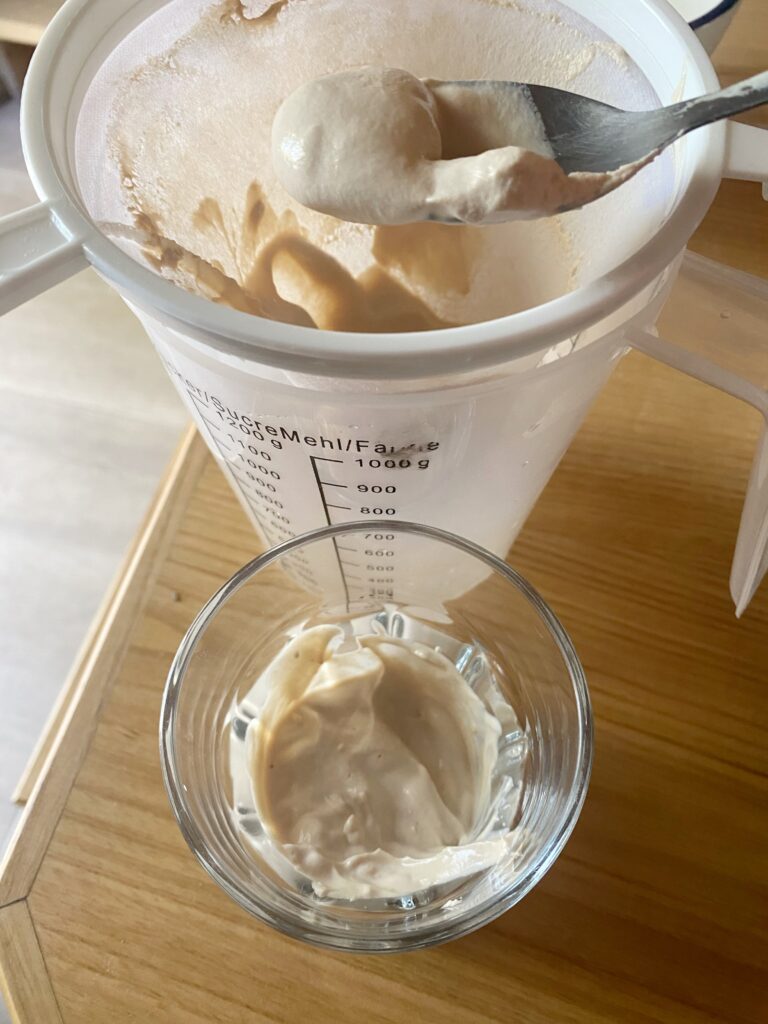
- Store-bought bio Soy milk without additives resulted in a very nice marcarpone like cream cheese after blending it shortly. It only worked though using the coarser cloth instead of the fine conical strainer cloth that I usually use now (see equipment below).
- Store-bought Rice and Almond Drink, though containing gelangum, resulted in a very creamy cheese with a slight sweet touch.
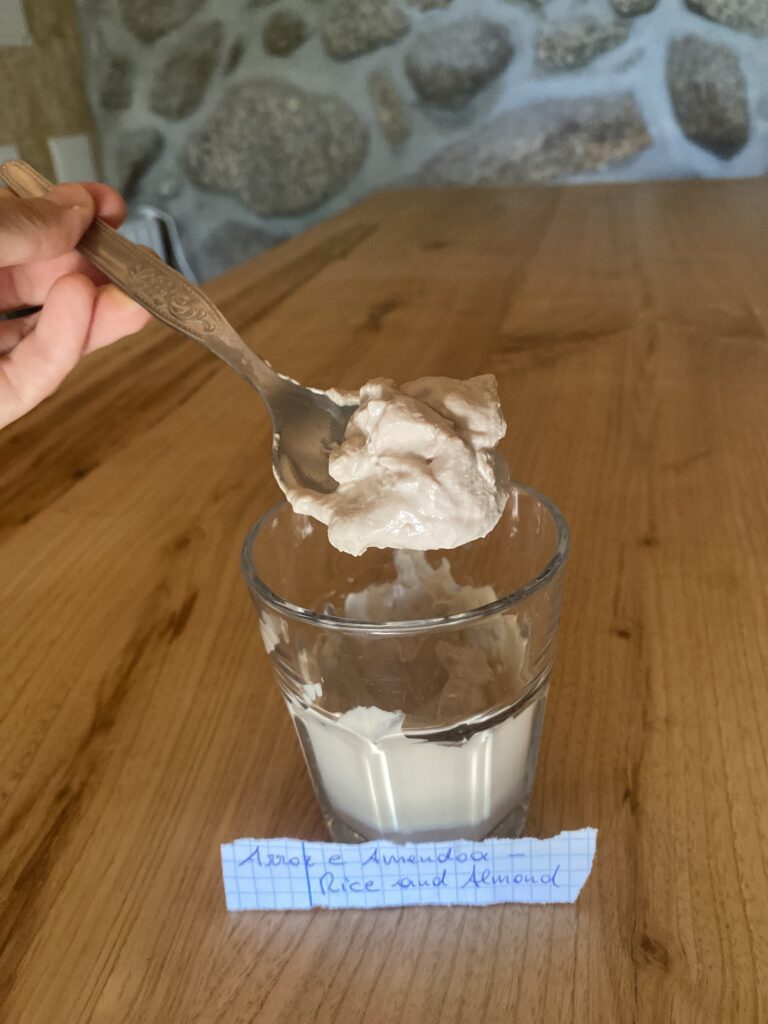
- Homemade Oat Milk, however, resulted in a thick pudding by merely heating it up … so no cheese with this kind of milk. At least with mine.
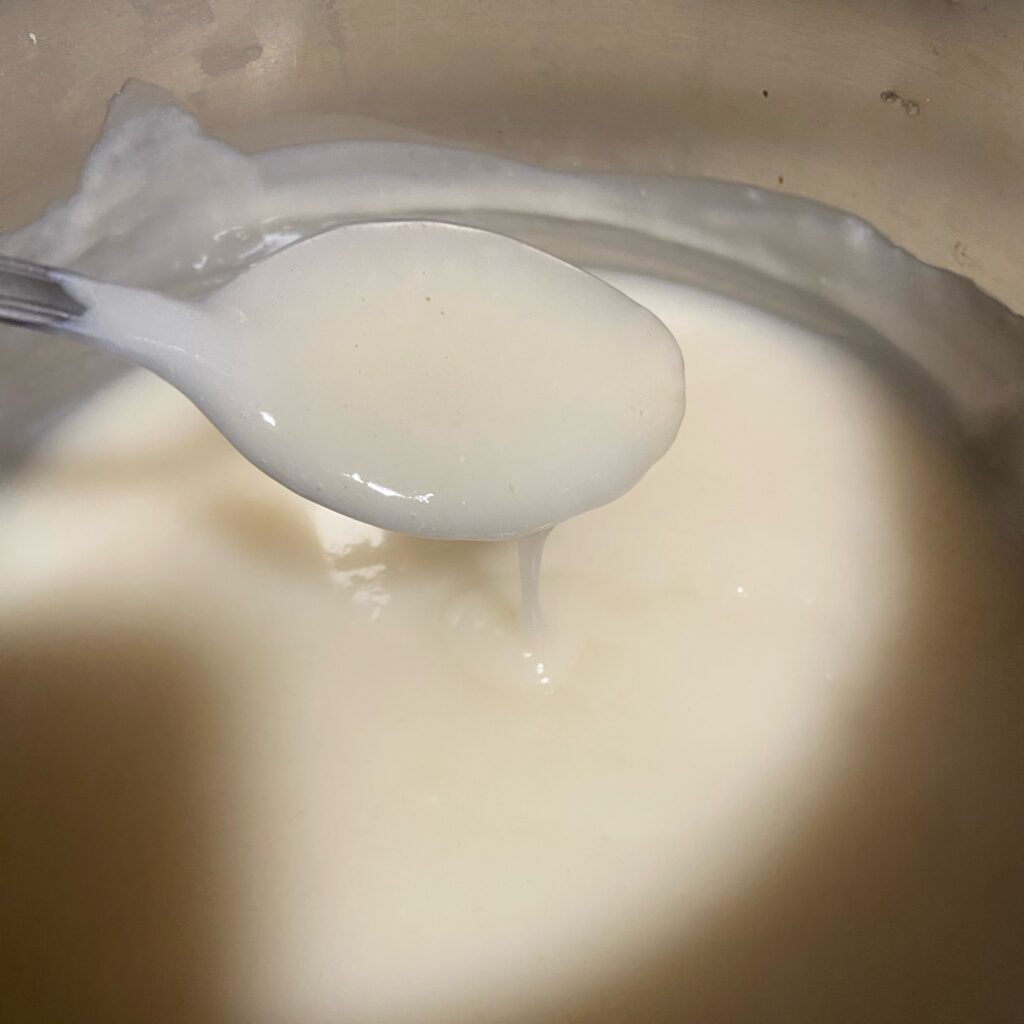
My cream cheese making equipment
When I started to experiment with cheese making, I only had a common kitchen towel and a strainer at hand. Well, it worked fine for the milk that I had, which was fresh goats milk and later soy milk. Now I changed to a finer cloth, as with the common kitchen cloth I lose quite some proteins. However, last time I made cream cheese from soy milk, I had to go back to the kitchen cloth, as through the fine cloth it did not move an inch!
However, I can only suggest and share from my experiences. These are the items that I currently use:
A strainer with fine metal net
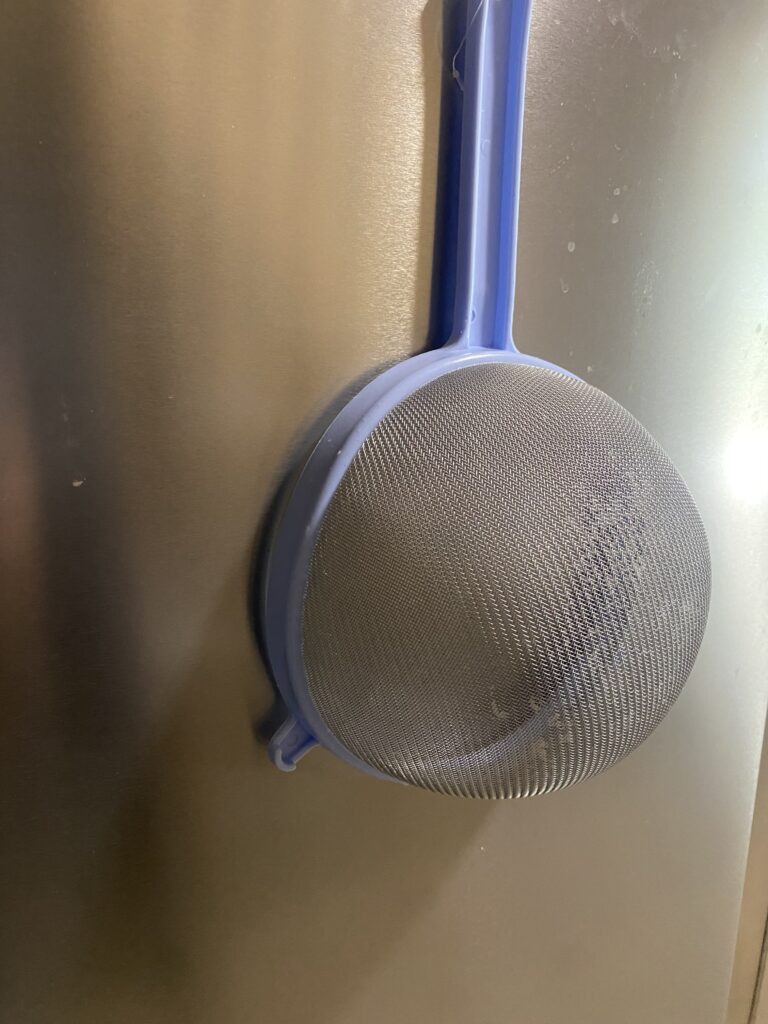
A conical strainer with fine cloth
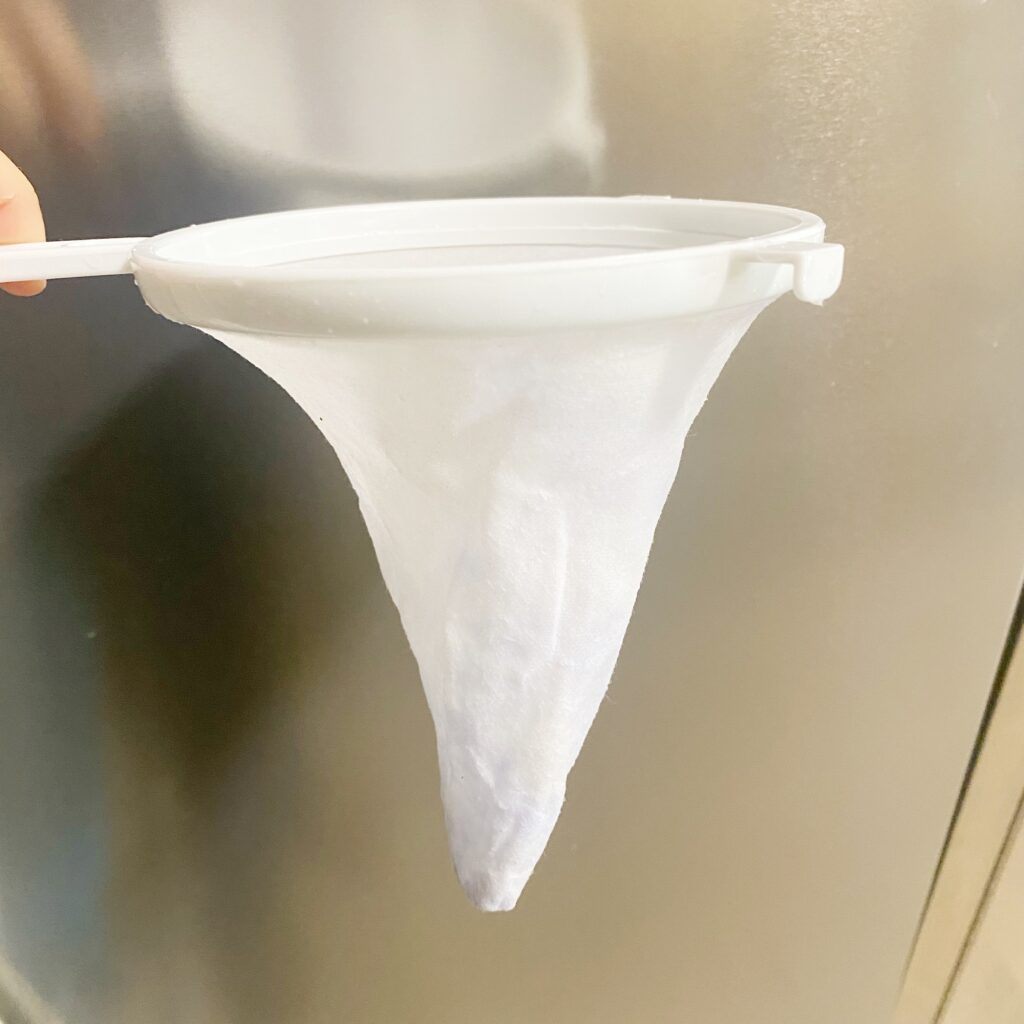
A common kitchen towel
